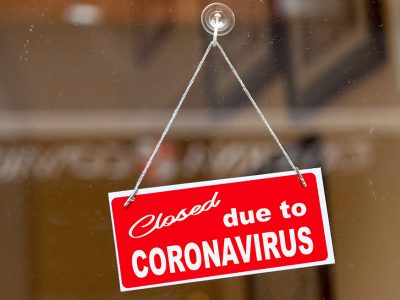What was Trump’s Role in Premature Reopening?
Legal Planet: Environmental Law and Policy 2020-07-15

In a column about a week ago, Paul Krugman pointed to the dire consequences of the reopenings in the Sunbelt and laid the blame entirely on Trump. He viewed it as “case of Republican governors following Trump’s lead.” The “main driving force,” he said, was Trump’s reelection strategy. There’s some truth to that, but it’s also too simplistic.
Yes, reopening happened after Trump called for it. But that doesn’t prove cause-and-effect. Even the ancient Romans knew it was a fallacy to say “post hoc ergo propter hoc” (after this therefore because of this).
For instance, both the governors and Trump may simply have been responding independently to the same political forces. Or the governors may have been encouraging Trump to help them out by giving them cover. Or Trump may have foreseen that reopening was coming and wanted to grab credit.
In short, knowing that Trump began calling for reopening and that it subsequently happened isn’t enough. We need to take a closer look at the facts to try to understand more clearly how things unfolded.
The Sequence of Events
Trump began calling for reopening in late March. On March 22, he tweeted that the cure shouldn’t be worse than the disease, and he began calling for reopening by Easter (April 12). On April 13, he falsely claimed to have the legal power to overrule governors’ lockdown orders. About ten days later, however, he criticized the Governor of Georgia for moving too fast to reopen. At the end of April, the Florida governor lifted the stay-at-home order for most of the state, while the Texas governor lifted his order and started Phase I reopening a few days later.
On May 9, continuing to push reopening, Trump called for a “transition to greatness,” meaning economic expansion. In mid-May, he cheered anti-lockdown protestors in the Midwest. Around the same time, Arizona’s governor allowed the stay-at-home order to expire and began Phase I reopening — about two weeks later than Florida and Texas, and three weeks later than Georgia began reopening. It was around the same time that Florida’s governor announced the state was in “full Phase I.”
No doubt Trump’s statements increased pressure on GOP governors to reopen, but there was a lag before they acted. But they didn’t respond immediately to his demands for opening. The timing for reopening was a bit later in Sunbelt states with Democratic governors. Nevada started reopening around May 9, and Louisiana lifted its stay-at-home order on May 15. These actions were 10-14 days after Texas and Florida, but around the same time as Arizona. According to CNN, “[a]s of May 20, each state that had imposed a stay-at-home order or shelter in place had begun lifting the restrictions of businesses and public spaces.”
Thus, there seemed to be a general move to reopening that hit different states at different times. The question is what role Trump played. Krugman’s argument was that Republican governors responded directly to Trump’s wishes. As is often the case, however, Trump gave mixed signals, loudly calling for reopening but then criticizing Georgia, the first Sunbelt state to move. Arizona didn’t move until significantly later, when Democratic sunbelt governors were starting to reopen as well.
Assessing Trump’s Role
Although we can’t be sure, my guess is that Trump’s influence mostly was less indirect than Krugman makes it sound. Trump probably fomented sentiment among Republican voters for a rapid reopening, which in turn influenced GOP governors. He may also have given them cover by claiming that it was safe to do so.
It seems likely that Trump bears some responsibility for reopening. If his actions accelerated reopening, he is responsible for the increased number of deaths in the states that reopened earliest. But the GOP governors who rushed to reopen early weren’t simply his puppets. They too bear their share of responsibility.
The post What was Trump’s Role in Premature Reopening? appeared first on Legal Planet.